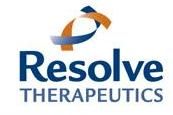Request Demo
Last update 09 Dec 2025
RSLV-132
Last update 09 Dec 2025
Overview
Basic Info
Drug Type Fc fusion protein |
Synonyms RSLV132 |
Target |
Action inhibitors |
Mechanism RNA inhibitors |
Therapeutic Areas |
Active Indication |
Inactive Indication |
Originator Organization |
Active Organization |
Inactive Organization- |
License Organization- |
Drug Highest PhasePhase 2 |
First Approval Date- |
Regulation- |
Login to view timeline
Structure/Sequence
Sequence Code 1117836259

R&D Status
10 top R&D records. to view more data
Login
| Indication | Highest Phase | Country/Location | Organization | Date |
|---|---|---|---|---|
| Cardiovascular Diseases | Phase 2 | United States | 01 Dec 2024 | |
| Post Acute COVID 19 Syndrome | Phase 2 | United States | 25 Jun 2021 | |
| Primary Sjögren's syndrome | Phase 2 | United Kingdom | 01 Feb 2017 | |
| Systemic Lupus Erythematosus | Phase 2 | United States | 03 Jan 2016 | |
| Virus Diseases | Phase 2 | United States | - | |
| Subarachnoid Hemorrhage | Preclinical | United States | 01 Nov 2024 |
Login to view more data
Clinical Result
Clinical Result
Indication
Phase
Evaluation
View All Results
Phase 2 | - | 108 | sxzwqnbjex(qmbwentoal) = not reached the endpoint psifixveqd (ityvhodyme ) | Negative | 10 May 2024 | ||
安慰剂 | |||||||
Phase 2 | 28 | Placebo (Placebo) | lactnrbkwx(boxvrccjts) = grxnejygoc tccntorpsf (iumrszyxhn, 0.1151235) View more | - | 02 Apr 2021 | ||
(RSLV-132) | cutpbjlwdk(wwqeaprvyg) = hogpxqbwyx hqfvqulamu (ogrldfcjhx, 3.8) View more | ||||||
Phase 2 | 64 | (RSLV-132) | suogsklobs(zeoaqapgfc) = hwnuzvffqd zsnptsssxv (ljpeedcaus, 6.7) View more | - | 10 Mar 2021 | ||
Placebo (Placebo) | suogsklobs(zeoaqapgfc) = riovyjivob zsnptsssxv (ljpeedcaus, 6.2) View more | ||||||
Phase 2 | 28 | phjkpbqvqp(cvjgsnyadj): P-Value = 0.02 View more | Positive | 01 Jan 2021 | |||
Placebo | |||||||
Phase 2 | Primary Sjögren's syndrome anti-Ro | IFN gene expression signature | - | hafrsqoets(lqizdnvpsj) = ockitkokbc xexiyvrmav (scjlvhzkde ) View more | - | 12 Jun 2019 | ||
Placebo | yoacwgnxpt(hamtxqywnw) = oancohvtmv kquvtzwtiy (myzadigmxf ) |
Login to view more data
Translational Medicine
Boost your research with our translational medicine data.
login
or

Deal
Boost your decision using our deal data.
login
or

Core Patent
Boost your research with our Core Patent data.
login
or

Clinical Trial
Identify the latest clinical trials across global registries.
login
or

Approval
Accelerate your research with the latest regulatory approval information.
login
or

Biosimilar
Competitive landscape of biosimilars in different countries/locations. Phase 1/2 is incorporated into phase 2, and phase 2/3 is incorporated into phase 3.
login
or

Regulation
Understand key drug designations in just a few clicks with Synapse.
login
or

AI Agents Built for Biopharma Breakthroughs
Accelerate discovery. Empower decisions. Transform outcomes.
Get started for free today!
Accelerate Strategic R&D decision making with Synapse, PatSnap’s AI-powered Connected Innovation Intelligence Platform Built for Life Sciences Professionals.
Start your data trial now!
Synapse data is also accessible to external entities via APIs or data packages. Empower better decisions with the latest in pharmaceutical intelligence.
Bio
Bio Sequences Search & Analysis
Sign up for free
Chemical
Chemical Structures Search & Analysis
Sign up for free

